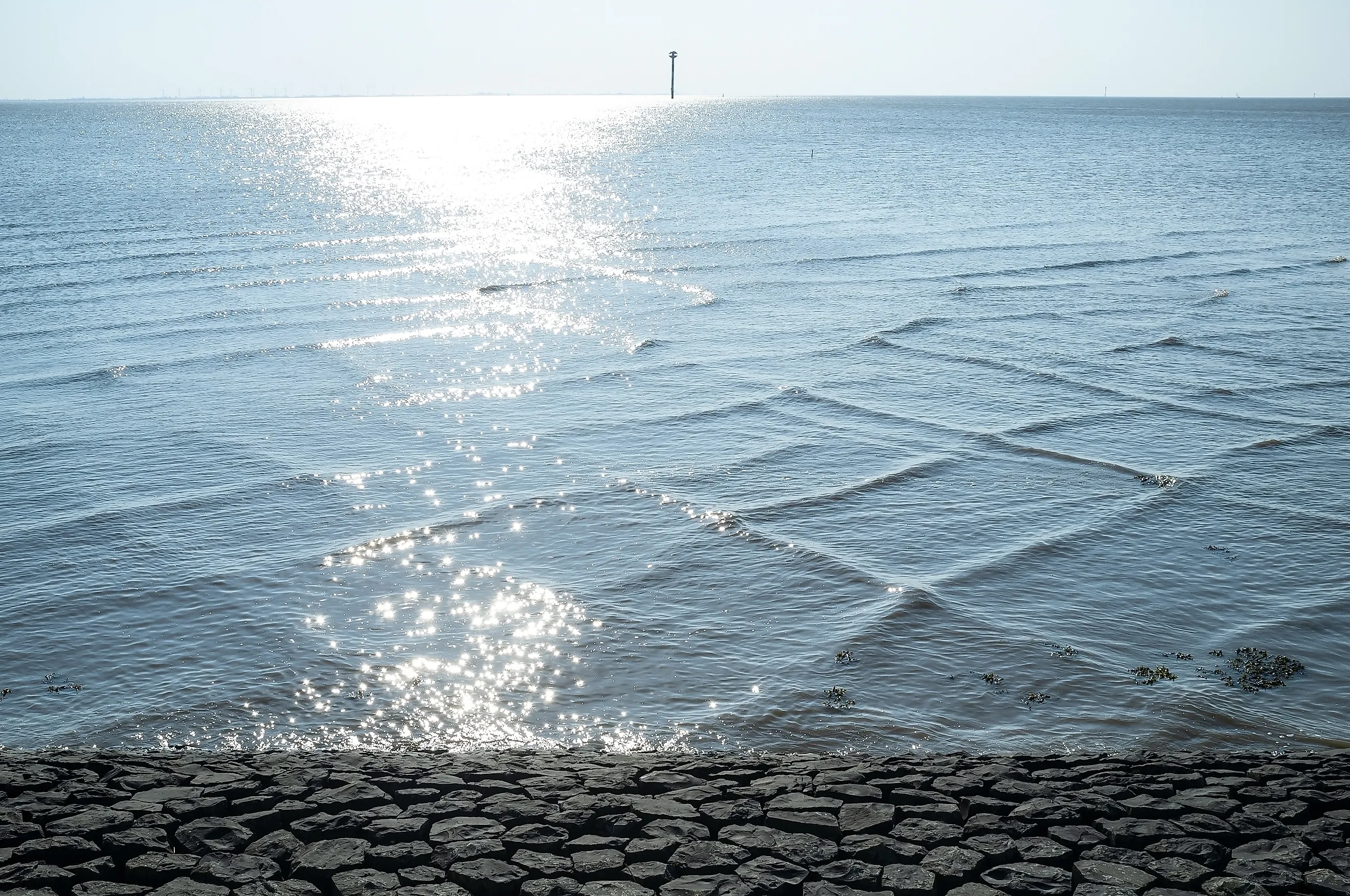
What Causes Square Waves In The Ocean?
Square waves, also known as cross seas, are a rare and striking ocean phenomenon in which waves intersect from two different directions, forming a grid-like or checkerboard pattern on the water’s surface. These crisscrossing swells are created when two separate weather systems meet, causing waves to travel at conflicting angles rather than in a single unified direction. While square waves may look mesmerizing and unusually calm from shore, they create powerful and unpredictable water movement below the surface.
This intersecting current pattern can produce strong lateral forces capable of pushing swimmers, surfers, and small boats off course. Even large ships can struggle with stability when caught in a strong cross sea, leading to difficult steering and increased risk of capsizing in severe conditions. For these reasons, cross seas are considered hazardous maritime conditions, and vessels and beachgoers are advised to avoid the water when this grid pattern appears.
What Causes Square Waves?
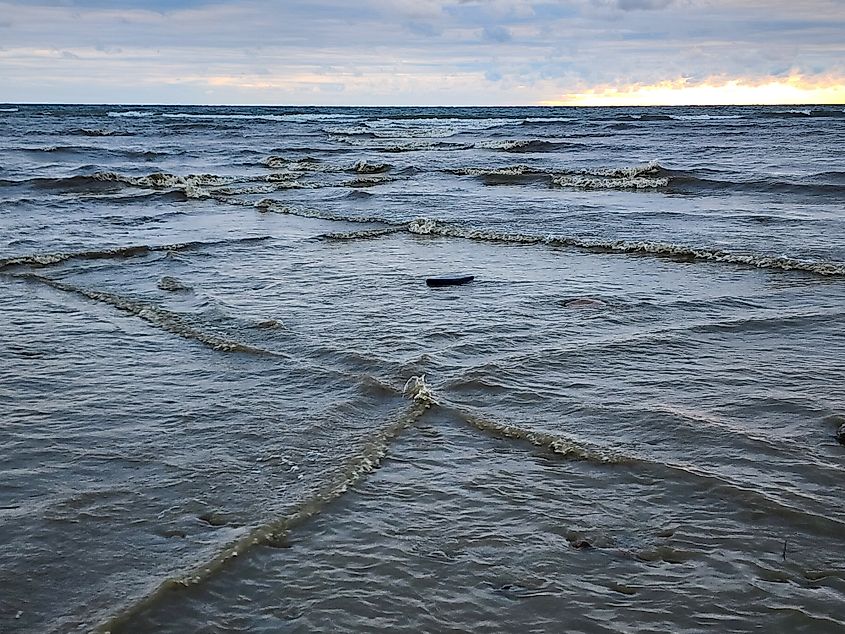
Square waves form when two wave systems travel across a body of water from different directions and intersect, creating a grid-like pattern on the surface. These wave systems often originate from separate storm fronts or weather systems, sometimes hundreds or even thousands of miles apart. As the swells move across the open ocean, they can continue long after the original storm has passed, especially when local winds are calm and do not disrupt the incoming waves.
When these swells meet at a significant angle (often around 45 degrees or more) they interact to produce the distinct checkerboard appearance known as a cross sea. Despite appearing calm from above, this crossing motion creates strong and chaotic currents below the surface, making cross seas extremely dangerous. The intersecting forces can make it harder to navigate than in typical rip-current conditions and may push swimmers, small boats, and even larger vessels off course or into unstable positions.
Where Do Cross Waves Occur?
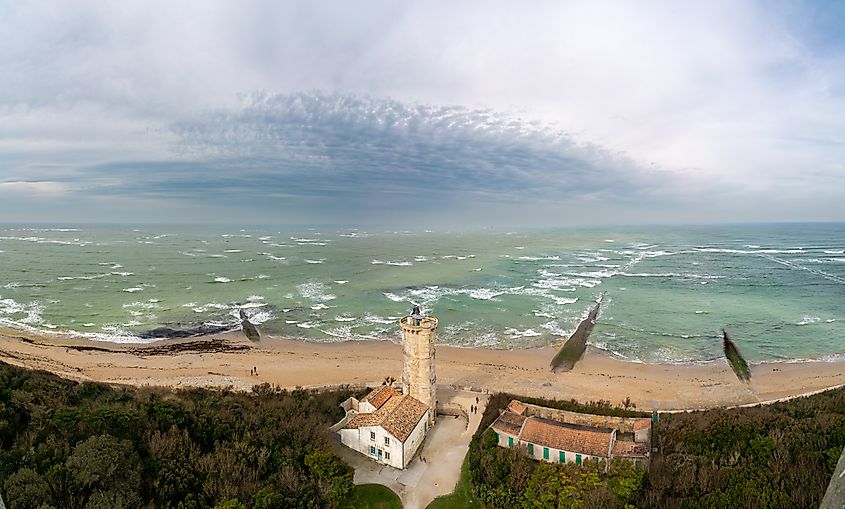
Cross waves can appear in many coastal regions in any body of water around the world when two wave systems meet at sharp angles, but they are most famously observed near Île de Ré off the west coast of France. There, swells from the Atlantic converge with coastal currents, creating a striking checkerboard pattern that draws curious visitors. Despite their beauty, authorities advise people to avoid entering the water when the pattern is visible, as the underlying currents can be powerful and unpredictable.
These formations are temporary and weather-dependent. Cross seas typically fade as the swells lose energy over distance or when local winds disrupt the intersecting wave patterns. As a result, they are not permanent features and may only appear under the right ocean and atmospheric conditions.
Are Cross Seas Dangerous?
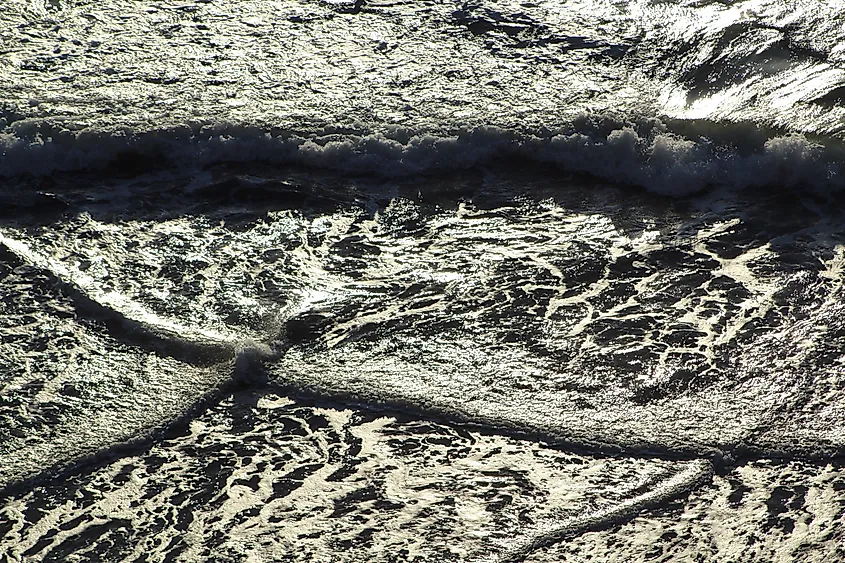
Cross seas may look fascinating from shore, but they are extremely dangerous, even when the surface appears calm. The intersecting waves create chaotic and unpredictable currents that can push swimmers, surfers, and small boats off course and into deeper water. Larger vessels may also experience instability, especially if the waves are strong. Although cross seas are relatively uncommon and often form and fade quickly, they pose a serious risk whenever they occur, and entering the water during this phenomenon is strongly discouraged.
Are Cross Seas and Rip Currents Similar?
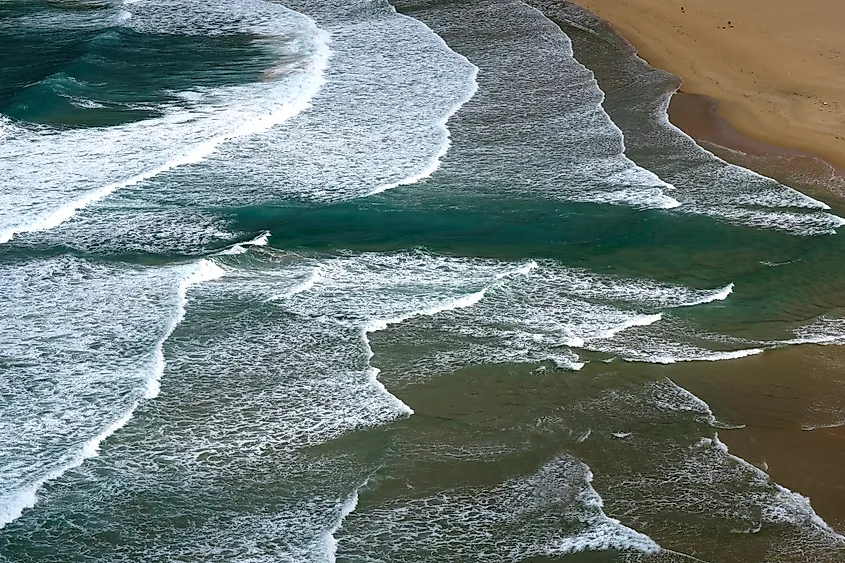
Cross seas and rip currents are not the same phenomenon. Rip currents are narrow, fast-moving channels of water that flow away from the shore, often forming near breaking waves, sandbars, and piers. They can quickly pull swimmers and small watercraft into deeper water. Many people get into trouble when they panic and try to swim directly back to shore, which can lead to exhaustion and drowning. The recommended response is to swim parallel to the shore to escape the current, then return to land at an angle. Rip currents are a major safety concern along many coastlines, including the East and West Coasts of the United States, where thousands of swimmers are rescued each year and approximately 100 drown annually.
Cross seas, on the other hand, involve intersecting wave systems, not a channel of water flowing offshore. While both can be dangerous, they form for different reasons and pose different risks.











